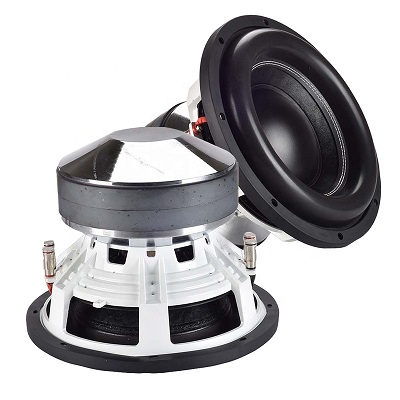This corner explains how to practice "sound tuning," which can be one of the pleasures of car audio. First of all, I will introduce how to use the light functions. Continuing from the previous time, this time we will explain how to operate the "equalizer" of the "5-band type".
First, let's briefly review the previous content. The "equalizer" is mainly a function to correct the disturbance of the frequency characteristics in the car and reproduce the sound as it is stored in the sound source, but it is difficult to use it like that with the "equalizer" with light specifications. .. Because the number of bands that can be operated is small. Therefore, it is not possible to pinpoint the part where the frequency characteristics are disturbed.
Because the human audible band is about 10 octaves. However, with the "5-band type" "equalizer", it is divided into 5 equal parts and adjusted, so only rough tuning can be performed.
However, it is possible to change the mood of the sound. In fact, even a simple "equalizer" called "5-band type" contains some preset data, and when you listen to each of them and compare them, the seasoning of the sound changes significantly.
Then, if you use the "preset data", you can train for "equalizer" adjustment. The procedure is as follows. First, try restoring your favorite "preset data" on the setting screen that you can adjust. And if you make fine adjustments based on that, you can set your own special tuning, and you can also get the knack of operation.
![Analyzing the sound of preset data ... Equalizer [Sound tuning practice course] プリセットデータの音を分析…イコライザー[サウンドチューニング 実践講座]](https://website-google-hk.oss-cn-hongkong.aliyuncs.com/drawing/article_results_9/2022/3/9/c3fcb32e3adcaa00d345aa9f024bbf8e_1.jpeg)
![Analyzing the sound of preset data ... Equalizer [Sound tuning practice course]](https://website-google-hk.oss-cn-hongkong.aliyuncs.com/drawing/article_results_9/2022/3/9/c3fcb32e3adcaa00d345aa9f024bbf8e_0.jpeg)
Before making fine adjustments, I would like to grasp the characteristics of the sound of any preset data that is the source material. To do this, carefully compare it to the unadjusted sound named "flat".
So, you should compare listening to your favorite songs (songs you are used to listening to). And when switching settings, always play from the beginning of the song. Also, the songs are not limited to one song, and it will be easier to grasp the characteristics if you play about three songs of different types.
Next, let's compare the sound sources by returning the amount of change of the band to which a large change is applied to zero. Then you can feel how the sound changed by the operation of the band. In other words, you can learn what kind of coloring can be done by increasing or decreasing the sound in that frequency band.
After performing this kind of confirmation work, let's create your own settings. Tweak some band settings to get the sound you want. By the way, in that case, the trick is to make only minor changes. This is because it is important how the sound changes with a little operation and whether or not you can feel it.
And the accumulation of this rule of thumb is very useful for improving the technique of "equalizer" adjustment. Later, when I got a model equipped with an "equalizer" with a large number of bands, this experience became a thing.
That's all for this time. From the next time, I will explain how to operate a full-fledged "equalizer" of "13 band type" or higher. looking forward to.
![[Denon new product] 13.2 ch AV surround amplifier "AVC-X8500HA" [Denon new product] 13.2 ch AV surround amplifier "AVC-X8500HA"](https://website-google-hk.oss-cn-hongkong.aliyuncs.com/drawing/article_results_9/2022/3/9/ad745d22fd0d603784e2e2dcbb6e3aab_0.jpeg)

